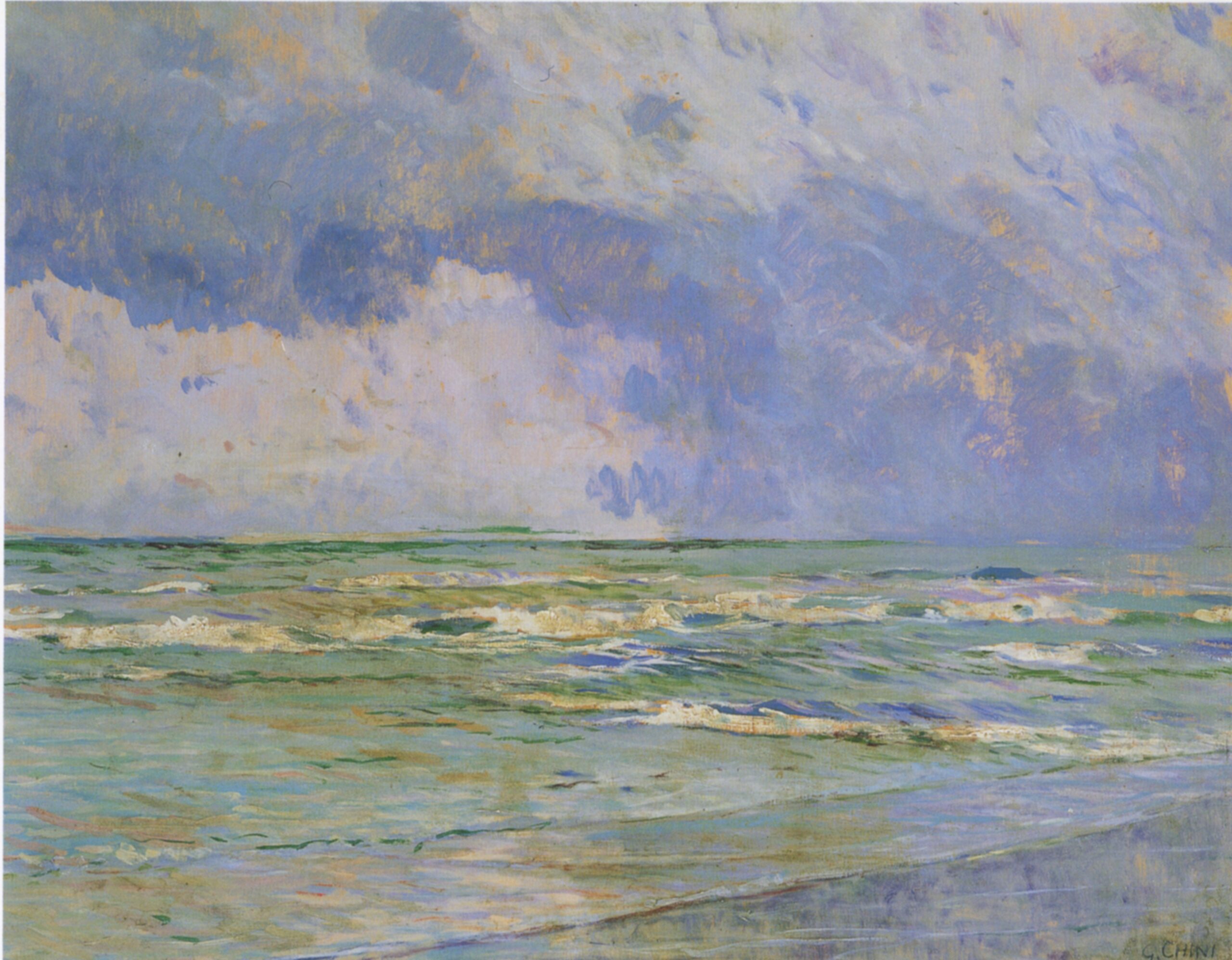Along the waters of Galileo

In Galileo Chini’s work, whether painting or ceramic, water occurs often. It is a source of suggestion that accompanies the artist throughout his creative journey.
Born in Florence, Chini loved its river, and he painted it many times: in his self portrait of 1901 he portrays himself strong-willed with the full color palette on the background of the river, his river, that seems to flow towards the delta, to establish an ideal link between the Arno and the sea.
Working as ceramicist to realize the decorations of the Terme Tamerici Spa in Montecatini Terme, in 1910, and the Terme Berzieri Spa in Salsomaggiore, in 1923, he emphasizes the aquatic symbologies he reproduces in ceramics of great chromatic impact and in the wall decorations, as in the one that was painted inside the sales pavilion of Sali Tamerici, (unfortunately lost) where playful mythological figures of the waters were depicted among large foamy waves.
In the decoration of the grand entry staircase in Salsomaggiore, typically Deco golden waves are the background of cherubs that stand out against leaves, flowers and fruits, above, female figures are floating, with clear reference to the water that gives life, from which everything is born.
Also from his time in Siam Chini brings back his impressions of the great river that crosses the city of Bangkok, the Chao Phraya, and its romantic canals adorned with vegetation. In the painting Ora nostalgica sul Me-Nan (Nostalgic hour on the Me-Nan) he depicts an intense sunset over the river in divisionist style: on a background of typical huts two small figures seem absorbed in the contemplation of so much beauty. In the large painting Canale a Bangkok, Chini makes the light vibrate between the leaves of the plants that almost touch the waters of one of the many internal canals, a moment of enchantment in the old city of Bangkok, while another large painting depicts a storm arriving on the sea of the Far East with an incredible charge of colors: yellow, blue and intense purple.
After many years dedicated to large decorations in the 30’s and 40’s Chini returns to easel painting and paints the landscape around him, in Florence and in Versilia. There are many paintings of the Arno: he portrays it at various times of the day and seasons, and at various points of its course, in the city and in the countryside, around the Casaccia and with the trees that once lined its banks and up to Bocca d’Arno (delta near Marina di Pisa.) When he returns to Florence from displacement he finds his city torn by bombs: in his paintings and drawings that portray the river’s banks and bridges destroyed by the war his connection to the river and the wounded city becomes poignant.
There is another very small river that was important to Chini : the Fossa dell’Abate, a canal that today separates Viareggio and Lido di Camaiore. At the time it gave its name to the area (now Lido), where in 1907 Chini acquired a pine glen next door to his friend Plinio Nomellini. In 1914, after his return from Bangkok, he built a house that would become his beloved Casa delle Vacanze. (Vacation house)
Chini portrays Fossa dell’Abate at sunset and at dawn, he paints the reflections on the calm waters of the few homes and trees on its banks, he depicts the radiance of summer lights and the subtle melancholy of autumn lights.
During the years he also dedicates many paintings to Viareggio’s harbor and the Burlamacca canal: the light of the docks in which the boats are reflected, the poor houses, the hulls on the scales, and then the sea “immense like an ocean” as he wrote, that stops under the glare of the summer sun or an incipient storm, with clear or cloudy skies.